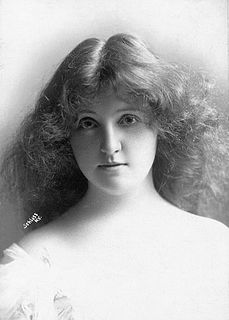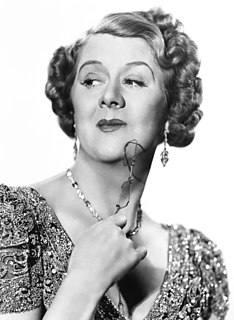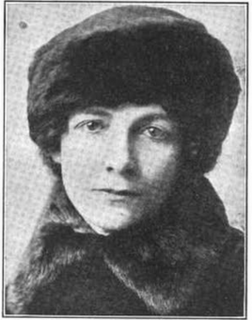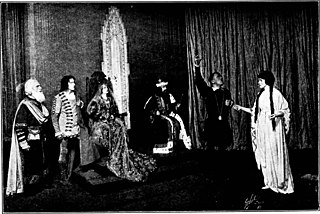Related Research Articles

Anything Goes is a musical with music and lyrics by Cole Porter. The original book was a collaborative effort by Guy Bolton and P. G. Wodehouse, heavily revised by the team of Howard Lindsay and Russel Crouse. The story concerns madcap antics aboard an ocean liner bound from New York to London. Billy Crocker is a stowaway in love with heiress Hope Harcourt, who is engaged to Lord Evelyn Oakleigh. Nightclub singer Reno Sweeney and Public Enemy Number 13, “Moonface” Martin, aid Billy in his quest to win Hope. The musical introduced such songs as "Anything Goes", "You're the Top", and "I Get a Kick Out of You."

Sidney Coe Howard was an American playwright, dramatist and screenwriter. He received the Pulitzer Prize for Drama in 1925 and a posthumous Academy Award in 1940 for the screenplay for Gone with the Wind.

Charles Sherman Ruggles was a comic American character actor. In a career spanning six decades, Ruggles appeared in close to 100 feature films, often in mild-mannered and comic roles. He was also the elder brother of director, producer, and silent film actor Wesley Ruggles (1889–1972).

Mae Questel was an American actress. She was best known for providing the voices for the animated characters Betty Boop and Olive Oyl. She began in vaudeville, primarily as an artist impersonator and played occasional small roles on Broadway and in films and television, later in her career, such as the role of Aunt Bethany in National Lampoon's Christmas Vacation (1989).

Helen Chandler was an American film and theater actress, best known for playing Mina Seward in the 1931 horror film Dracula.

Roland Young was an English-born actor. He began his acting career on the London stage, but later found success in America and received an Academy Award nomination for his role in the film Topper (1937).

Eleanor Audley was an American actress with a distinctive voice and a diverse body of work. Audley was best known for her roles as aristocratic, somewhat villainous matrons. She played Oliver Douglas's mother, Eunice Douglas, on the CBS sitcom Green Acres (1965–1969), and provided Disney animated features with the voices of Lady Tremaine in Cinderella (1950); and Maleficent in Sleeping Beauty (1959). She had roles in live-action films, but was most active in radio programs such as My Favorite Husband and Father Knows Best. Audley's television appearances include those in I Love Lucy; The Dick Van Dyke Show; The Beverly Hillbillies; Mister Ed; and My Three Sons.

Lucille La Verne was an American stage and screen actress known for her appearances in silent, scolding, obnoxious, vituperative, sarcastic, cunning, and vengeful roles in early sound films, as well as for her triumphs on the American stage. She is most widely remembered as the voices of the Old Witch in the 1932 Silly Symphony short, Babes in the Woods, and the first Disney villain, the Evil Queen, Snow White's wicked stepmother from Snow White and the Seven Dwarfs (1937), Walt Disney's first full-length animated feature film as well as her final film role.

Mary Boland was an American stage and film actress.

Laura Hope Crews was an American actress who is best remembered today for her later work as a character actress in motion pictures of the 1930s. Her best-known film role was Aunt Pittypat in Gone with the Wind.

Nydia Eileen Westman was an American actress and singer of stage, screen, and television.

Mary Clare Absalom was a British actress of stage, film and television.

John Grant Mitchell Jr. was an American stage actor on Broadway and mainly a character actor on film. He appeared on Broadway from 1902 to 1939 and appeared in more than 125 films between 1930 and 1948.

Hessy Doris Lloyd was an English–American film and stage actress. She is perhaps best known for her roles in The Time Machine (1960) and The Sound of Music (1965). During her career, Lloyd appeared in two Academy Award winners and four other nominees.

Ethel Griffies was an English actress of stage, screen and television. She is perhaps best-known to modern audiences as the ornithologist Mrs. Bundy in Alfred Hitchcock's The Birds (1963). She appeared in stage roles in her native England and in the United States, and had featured roles in around 100 motion pictures, she was one of the oldest working actors in the English speaking theatre at the time of her death at 97 years old. She acted alongside such stars as May Whitty, Ellen Terry and Anna Neagle.

Ruth Donnelly was an American film and stage actress.

Thomas Foster "Jack" Raine was an English stage, television and film actor.
Her Master's Voice is a 1936 film directed by Joseph Santley and based on the 1933 play Her Master's Voice by Clare Kummer. The film's sets were designed by the art director Alexander Toluboff.

Clare Kummer was an American composer, lyricist, and playwright.

Rollo's Wild Oat is a 1920 comedic play by Clare Kummer.
References
- 1 2 S. H. Steinhauser (1935-03-17). "Here Come The British To Radio Bringing A Song Hit Every Time". The Pittsburgh Press. p. 5 (Society Section). Retrieved 2021-08-20.